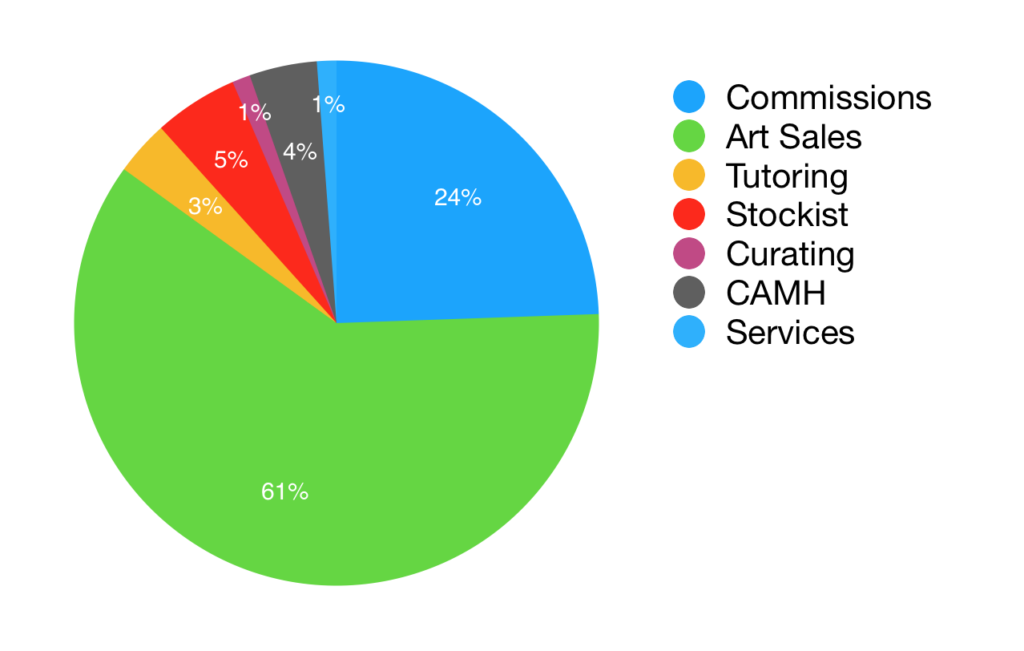Your cart is currently empty!
Artists, do you know where your money is coming from?

One of the foundational ideas behind creating a successful and sustainable business as an artist is to establish multiple income streams that can support your art career. Very few artists can support themselves on their art sales alone, so they have alternative income sources, such as teaching, licensing, wholesale, or a day job.
In my experience, all artists have a unique balance of these things that support their career.
I know one artist who has a paid artist-in-residence postion, teaches workshops all over the country, and sells her artwork.
I know one artist who teaches as an adjunct, licenses her images, and sells her artwork.

So, when looking back at my year in 2019, my first year in business as an artist, and notably, a year that I wasn’t also teaching, I felt that I needed to assess where my money was coming from. There is important financial freedom in understanding how my art business functions, and so I created the following chart to help me understand this essential aspect of my business.

Here’s what I learned.
My biggest source of income was selling art. By far. I was shocked and happy. It means I should spend more time making and marketing my artwork. I will continue to set up at 1st Saturday Art Market and have online shop launches this year.
Both CAMH and curating artwork for local shows are low earners. These things take a lot of my time and if I want to continue to do them, I need to find the value that they bring to my business beyond income, such as network connections or enjoyment. I will probably do less curating in 2020 based on this information.
Do you know where your money is coming from?
I encourage you to do this exercise. Download a .csv from your bookkeeping software. I use quickbooks self employed and I highly recommend it (that’s my affiliate link if you want to save some $). Then sit down and spend 30 minutes doing a little sorting.
- Think about the categories where you earn revenue and what you want to track.
- Color code or otherwise sort your revenue for the year based on the categories you selected.
- Use excel or numbers to load the data into a pie chart.
My big tip.
Think about what you want to learn. Perhaps you include your day job, or perhaps you don’t. I chose to separate commission revenue from other art sales. Commissions take a different amount of effort and time and I wanted to know how they measured up.
I was inspired by @closecallstudio, one of the two artists behind my often recommended podcast, @beyondthestudio, to do this exercise. I hope you find it valuable to understand where your money is coming from.
Let me know if you have any questions about making your chart in the comments. I’m happy to help.